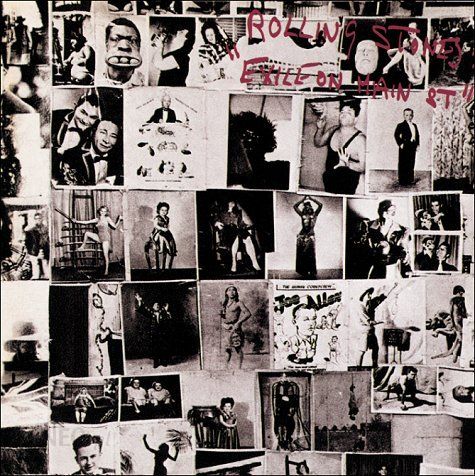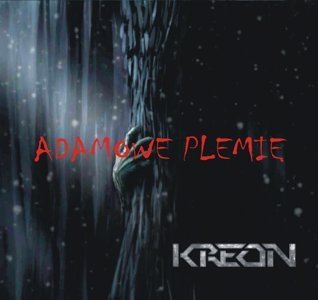Velvet Underground - the history of the band.

The Velvets exploded in the face of the hippies. In the midst of the summer of love and flower children, tired New Yorkers in worn leather jackets, they sang about alienation, lust, drugs, addictions and sadomasochism ... A review of their only "positive" album in Rolling Stone magazine sounds like a priest sermon on a convert, a stray sheep: "The album shows the power of self-transformation of the human soul". The people in the bells couldn't stand them. No one in the sixties tried so many new things, it did not blaze the way for new types of music and did not differ so much from the mainstream under the sign of long hair and the Beatles. Without them, bands like the New York Dolls would never have arisen, Roxy Music, Sex Pistols, R.E.M., Sonic Youth, Nirvana or Stooges. Without them, there would be no Patti Smith, David Bowie or Iggy Pop.
Julian Casablancas of Strokes once wrote: “When you listen to a classic rock station, Don't you wonder why Velvet Underground is not playing? Why does it always have to be Boston and Led Zeppelin. Why the Rolling Stones are, so popular compared to them. OK, I still understand the Rolling Stones, but there is also a part of me that is careful, that the Velveci should be the number one band. Velvet Underground was so ahead of its time. Their music was strange, but it always made sense to me. I couldn't believe it, that it's not the most popular music ever made.
Before Velvet Underground was born
Lou Reed - arguably the band's most famous member - was born in New York City, in Brooklyn. As a young boy, he learned to play the guitar from the radio, and in high school he played in many bands, playing rock n roll or rnb. He first entered a recording studio as a member of the band The Jades (according to other sources: The Shades), playing doo woop, popular at the turn of the 1950s and 1960s.
One of the hardest experiences in the teenage years was electroshock, credited to him in the hope of curing him of "bisexuality". As he described it in an interview, w 1996 year: “They put something down your throat so you don't swallow your tongue, and they stick the electrodes to your head. This is the treatment that has been recommended in Rockland County as a prescription for "homosexual feelings.". As a result of this therapy, you lose your memory and turn into a vegetable. You are unable to read the book, because by the time you get to page 17 you have to go back to the beginning of the book. "
W 1960 began studying journalism, film directing and creative writing, a w 1961 of the year he became the host of the night radio program "Excursions On A Wobbly Rail", in which he played music, mainly jazz and blues. It is believed, that Reed borrowed many of his guitar techniques from jazz saxophonists, such as Ornette Coleman. One of Reed's most important experiences at that time was attending the classes of the excellent poet Delmor Schwartz.
After graduation, Reed began working as a songwriter for Pickwick Records, where he wrote his first hit - intentionally silly song "The Ostrich", which is a parody of the popular dance songs at the time. The studio saw the potential in the piece and gave him access to the recording studio and sent a group of musicians, among whom was a Welsh musician… John Cale.
The band is born
The couple quickly liked each other. John Cale was an avant-garde musician, who came to the USA on a scholarship, experimenting with form together with figures such as La Monte Young or Cornelius Cardew, while Reed was writing poems about the streets of New York. Cale discovered with delight, that Reed had tuned all the strings on his guitar to the same note, wanting to achieve moaning, strong sound. The two lived together on the Lower East Side. Sterling Morrison soon joined them (Reed's college buddy) and Angus MacLise as drummer. The four began to play together and perform under such names as "The Warlocks", „The Primitives” czy „The Falling Spikes”. Interestingly, they started not in bars, but in art galleries and at poetry evenings, dozens of which were held in lower Manhattan at that time. As "The Primitives" they even recorded a series of singles for Pickwick Records (including the aforementioned Ostrich).
W 1965 year the band found its name: Velvet Underground. Weird writing was the inspiration, with the same name, edited by Michael Leigh, targeted at the 1960s subculture and describing atypical sexual practices, and MacLise came up with the idea of naming the band that way. The rest of the team, and Reed readily agreed to it. The name matched Lou Reed's words at the time, "Venus in Furs", a piece about sadomasochism, inspired in turn by the book by Leopold von Sacher-Masoch of the same title.
In July, Reed, Cale and Morrison recorded a demo in their loft on Ludlow Street. way, who briefly returned to Britain tried to squeeze them Marianne Faithfull, hoping, that she would pass it on to Mick Jagger. Nothing came of it, and the demo was published as a curiosity only in 1995 of the year as "Peel Slow and See" - a title referring to the cover of their first album.
In the same 1965 year, MacLise left the band, because he didn't like the idea of creating a permanent group. Interestingly, in the following years he gained recognition as a poet and brilliant drummer. Then he went to Asia, where in 1979 He died of starvation in Nepal. His recovered works were released in 1999 i 2000 year. Reading the history of this band makes an impression, that anyone who brushed against him did something extraordinary later (different character, which passed through Velcets, Nico, which I will write about later, became a famous model and starred in Fellini's "Sweet Life").
Slow start
MacLisea replaced Maureen Tucker on drums, Morrison's friend's sister and band began to practice regularly and perform throughout New York City. As Cale recalls, then they played much softer and poetic music, than the one for which they later became known.
11 November, the band first played as Velvet Underground, opening Myddle Class's performance at a high school dance in Summit, New Jersey. It was also their first paid performance - manager and journalist Al Aronowitz helped them get their first 75$ (the acceptance of this performance was a direct reason for MacLsea's departure) After a few months of playing together, they managed to get a permanent job at Cafe Bizarre, w Greenwich Village, where they met Andy Warhol (which I don't think I need to introduce). In day, in which the band was fired by the cafe manager - for playing "Black Angels Death Song", right after he told them to play it, Warhol invited them to play during his film screenings at Cinematique Uptight, and later as a permanent team on their Exploding Plastic Inevitable shows (the show included the screening of Warholoa films). Together with Warhol, they toured the USA and Canada. During this time, MacLise briefly rejoined the team, when Lou Reed broke down jaundice.
In December 1996 of the year, Warhol and Dalton designed The Edition 3, your pop art magazine, sold in patterned washing powder packs, containing numerous leaflets, including Lou Reed's commentary on rock n roll and a CD of "Loop", assigned team, and being a de facto composition by Cale (this is probably the first example of industrial music "). Also thanks to their daring mentor, the band signed a contract with MGMs Verve Records.
For the aforementioned performances, Warhol forced them a bit as a second singer, German model and singer Nico. The band did not accept it into their ranks and this is how the bizarre name was created ...
Velvet Underground and Nico
Despite Reed's initial reluctance, I finally wrote some songs for her (the two were lovers for a time) and shortly thereafter, already in 1966 year, the album with the above name was recorded, which when it hit the stores, reached 171st place on the list of best-selling albums in the USA, and he would probably go higher, had it not been for an unpleasant incident, which forced the band to withdraw the disc from stores. Well, there is a photo of the band on the back of the dust jacket, in which, by accident - in the background - was Warhol's actor, Eric Emerson. This guy had a drug problem at the time (he was threatened with arrest) and urgently needing cash, he sued the team for "unlawful use of the image". The commercially accelerating album had to be withdrawn from sale and only returned with a retouched photo, which contributed to a much worse result on the box office list.
This album deserves a separate paragraph. Ba! It probably deserves a separate article, and even a book. Rolling Stone named it the 13th best album of all time, and Brian Eno, describing it, said: “Maybe not many people bought it, but everyone who bought later started their own band. "
How to describe this album?
Pulsating and groaning Calea guitar, bored, a bit weird vocal by Nico, and all infused with Lou Reed's pop-rock n roll aesthetic. So brilliant, Pop did not collide with the dark year again until the beginning of the nineties. Let's add to this completely unusual Maureen Tucker drums assembled probably from what was lost and ravishingly lively guitar by Sterling Morrison and already, almost, we almost have the full picture. Let's add a pinch of Andy Warhol's influence and reluctance to follow the beaten track, and we will get one of the most unusual albums ever to hit the shelves of music stores with the inscription "rock n roll". As John Cale says: “We tried to recreate Phil Spector's technique, using the minimum possible number of instruments. " The Spectors' "wall of sound" made a furore at that time and the Velvets took this idea to completely new territories. Aha, and the cover design was of course done by Andy Warhol - the famous yellow banana on a white background (the banana was a sticker, next to it was the words "peel slowly and see" - play on words peel = peel, peel off).
What will we find on it? In "Heroin", Lou Reed reaches the pinnacle of his writing and composition skills. Poetic, and at the same time a journally accurate and real story about buying and using heroin, once we listen to it, it will stay with us forever - especially the howling Cale guitar strings, probably treated with a cello bow. A Rolling Stone reviewer at the time called the song "furiously nihilistic". In the aforementioned "Venus in furs", deals with the topic of masochism, Waiting for the man is about buying drugs from a dealer, and the theme of "The Black Angels of Death Song" probably needs no explanation ... For the first time someone dared to sing about the dark side of life in this way. Not for flower children, really…
Three songs were sung by Nico - beautiful "I will be your mirror" and psychedelic "All Tomorrows Parties", which is associated with a dying party and was Warhol's favorite recording and the slow "Femme fatal" - all made in a voice that was drained of emotions, which reinforced the bizarre, disturbing pronunciation of the album. Apart from that, we can find a lovely and sleepy "Sunday morning" and lively "Run, run, run”.
The release of the album was not without complications - the policy of the recording studio resulted in it, that from the moment of recording to the moment, more than a year passed when it appeared in stores. But when the album finally hit the stores, the foundations for punk rock were laid, grungy, new wave or even reigning for some time "emo-rock".
White Light/White Heat
Soon after the release of the first album, the band had a fight with Warhol. It was about a performance in Boston, which Nico and the rest of the Epiy had missed, except for the Velvets. Warhol i Nico, against Cale's protests, they were released. Steve Sesnick has become the new manager, however, without the promotion machine of the previous maintainer, the band disappeared from the main stage.
The matter was made even worse by the release of the avant-garde next album White Light / White Heat in 1967 year. This is another legendary album. Recorded in one day (!), was promoted by the band with a series of concerts… which hardly anyone came to. Their performances grew louder, sharper and contained increasingly stretched improvisations (the two longest tracks from the album are over ten and over seventeen minutes respectively). The good side of their crazy experiments was sponsorship from Vox, who was delighted, that a band is using newly introduced special effects.
The album best describes the statement of the group's guitarist, Sterling Morrison:
“The sound was amazing, we all played so loud and had so much electronic crap plugged in in our studio - all these compressors and amplifiers. Gary Kellgren, who is always ultra-knowledgeable kept telling us over and over: You can't do it like that, all indicators are red!, and we invariably responded: Listen up, we don't know how it works and we don't want to know it. Just do your best. Album jest taki skrzeczący, there is so much white noise on it ... We wanted to create something electronic and energizing. We had energy and electronics, but we had no idea it couldn't be recorded and we just fried the tapes. "
The result was raw, overly saturated with sound recording. As Cale said, "Our debut had its fragments of sensitivity and beauty. The second album was consciously anti-beautiful. "
The title track begins with the sound of John Cale's piano hitting the keys. Later the album turns into the second song "Gift" a hilarious story about a clumsy boy attached to his girlfriend, who dies a macabre death, narrated by Calea with background music and then the wonderful "Lady Godivas Operation" about sex surgery, Reed's favorite track and probably the best track on the album (obok „Here She Comes Now”, which was later well covered by Nirvana). The album closes with the endless "Sister Ray", which, however, does not get bored at all.
The disc was finally released in January 1968 a year and for two weeks he rubbed the bottom of the list 200 best-selling tracks (place 199).
Cale goes away
The differences between Reeed and Cal grew. W 1968 at the urging of Sesnick, Reed presented the team members with an ultimatum: Either they fire Cale or he leaves. Morrison and Tucker reluctantly sided with Reed, and Doug Yale replaced Cale as the band's new bassist. The band's sound flowed into a lighter one, more pop side. W 1969 of the year, the album "Velvet Underground" was released, recorded in Los Angeles, it was much softer and more melodic (the malicious ones explained this change of sound, the fact that VOX fuzz boxes, responsible for the distorted sound of WL / WH were stolen from the band at the airport shortly before recording the new album ...). Even the theme of the songs has changed to be more joyful and positive. Such a drastic change of course resulted in the loss of many former fans and the termination of the musicians by MGM label (according to another MGM theory, who wasted their money over the years releasing bands such as The Animals and Mothers of Invention, under the new president decided to get rid of the rock and drug ballast). The new lighter tones, however, appealed to the competition - Atlantic label - and the move took place at an express pace.
Loaded
Your first album, which they tried to reach a wider audience, Velvet Underground, they recorded in the summer 1970 year. It was a period, where the inside of the band looked worse than ever, and the external situation was probably the best since its inception. They were slowly gaining popularity in New York, they played concerts, for the first time in years, on the other hand, the band broke into pieces. Maureen Tucker was shortly after giving birth and took a leave of absence from the team (on drums she was replaced by Doug Yule, sound engineer Adrian Barber, session musician Tommy Castrano, and even Yule's high school brother Billy), Lou Reed kept threatening to leave and finally did, before the album was even finished. The band officially ran until 1973 year, but de facto died in 1970 year, leaving behind the two most popular songs: „Sweet Jane” i „Rock n Roll”, and also wonderful, the lazy ballad "Oh! Sweet Nuthin”). As a curiosity, I will add, that it took them longer to record this album than to record the previous three put together, and the title was taken from a quotation from one of the owners of the ordering factory, for the album to be "loaded (loaded) hits "
Music
When we talk about Velvet Underground, their underground fame, affiliation with Warhol etc.. one cannot forget how brilliant musicians they were. John Cale and Lou Reed both had classical music education. Reed division pianist, a Cale as a cellist. MacLise and his successor Tucker, they were brilliant drummers. Tucker Drums Made by Tucker, consisting of tam-tams and an upside down bass drum provided the band with a unique sound. Let's add one more, that instead of chopsticks she often used malets and never actually used plates, and when one day her drums were stolen from the club without a word she replaced them with tin trash cans torn from the outside. There is no second drummer, which would sound like this. Primary rhythm, what she managed to get is reminiscent of recordings of Bo Diddley and early blues musicians. Reed always spoke respectfully about her and said in a recent interview: “I tried to explain to other drummers, in the hope that they will be able to play that too, but no one could repeat it. "
You can find amazing fragments already on their first album, characterized by extraordinary skills and musical taste. Just pay attention to the incredibly melodic rhythm guitar in "What Goes On".
Aftertaste
After leaving the band in August 1970 year, Lou Reed worked for a time at his father's accounting firm as a train driver (rewriting invoices on a typewriter ...), earning some 40 dollars per week. However, he did not give up and a year later he signed a contract with RCA and recorded his first solo album with such famous musicians as Steve Howe and Rick Wakeman from the famous progressive rock group.: Yes. The album didn't sell well, but garnered remarkable reviews - a Rolling Stone journalist called it "almost perfect".
You could say, that he was the only one to land on his feet. In later years, Cale also achieved some success, and in a completely different field also Niko
Looking at the fate of this team, I can't help but think, that to create truly brilliant music you need two creative giants, different from each other in every respect. Such an explosive mixture was responsible for the brilliant music of The Beatles (Lennon&McCartney), Rolling Stones (Jagger&Richards) and finally The Smiths, The Who… Czy ostatnio ostatnimi laty Strokes. These duets make a shaky alliance, and then in a duel of ego and conflicting creative visions they disperse everyone in their own direction. Only the drugged and egoless Richards broke the rule, just like the principle, that after taking a certain amount of drugs one should stop living.
And now it's time to grow the Velvets.









